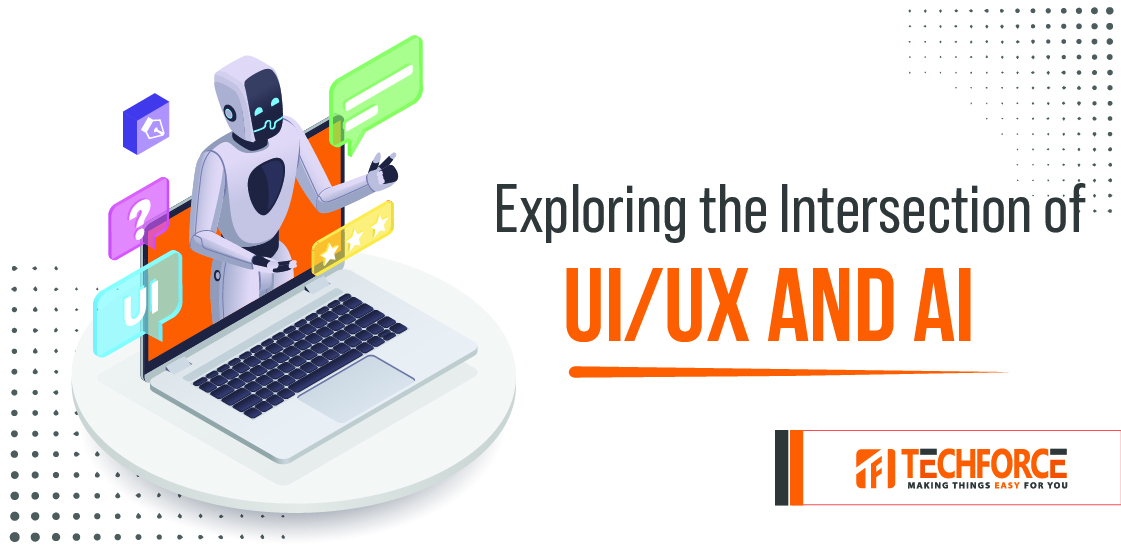
In simple terms, artificial intelligence opens new doors in UX design.
It offers an innovative and exciting opportunity to create more personalized and effective user experiences than ever before. It also makes life easier for UX professionals, whether it’s assisting with interview question ideation or accelerating wireframe development.
As we’ll see throughout this blog, AI in UX design affects not only the final design but also the UX design process. However, it does present some issues that must be addressed—let’s take a look.
How can AI assist you in improving the user experience and ensuring user success? Here is the guide on How to use AI in UX design.
Understanding how users move through a product—what their interaction and experience look like—is a key focus for UX designers when creating UX designs. User journey mapping is a critical—and time-consuming—task for UX designers that entails researching users, analyzing massive amounts of data, and creating step-by-step flows.
It’s a critical task that comes before any design ideation or generation—and it’s one that AI can help with.
AI can assist in the creation of user journey flows in several ways:
Experiment with UX research prompts to get more relevant feedback that reveals user expectations, pain points, and more.
Develop flow diagrams in seconds to eliminate the manual work of creating your own. Insert your data and watch as your flow chart appears before your eyes.
AI can significantly accelerate the customer journey flow mapping process, allowing up your time to focus on other high-impact tasks that AI cannot handle.
AI can automate many stages of the UX design process, from feature design to prototype testing and delivery of new features. Automation saves time in any process, and there are plenty of things to automate when it comes to improving user experience.
Look at this: Use artificial intelligence to generate copy for UX designs in seconds, whether it’s in-app copy, help documents, or explainer emails. Using AI-powered image generators, create visual elements for UX designs. Use Figma plugins to incorporate AI into your Figma designs, such as creating wireframes or prototypes.
Using AI in the UX design process makes everyone’s life easier, from UX designers to project managers to product engineers.
Furthermore, there are numerous AI options available—AI can be implemented on a project-by-project basis.
Let’s delve a little deeper into using AI to generate copy, specifically for in-app messages.
AI copy-generation tools use pre-trained natural language generation (NLG) models to understand prompts and generate relevant copy. This technology is used to create a copy by chatbots, voice assistants (such as Siri or Alexa), machine translation tools, and other applications, including AI copy generators.
When used in UX, we frequently consider generating copy for in-app messages such as launchers, tooltips, micro surveys, and the like. This is the copy that users see within your product, guiding them to a desired action or unblocking them when they encounter unavoidable friction points.
However, whether AI-generated UX copy can compete with the real thing is still up for debate:
“It’s pretty generic unless you instruct it to inject some personality (e.g., “Write this confirmation button in the style of William Gibson!”). As writing in-product copy is more of an exercise in art and appealing to humanity, I see more of an opportunity to assist teams in writing product documentation. But I do not doubt that it will get there.”
According to Scott, Co-Founder and Chief Product Officer at Churnkey, the more developed and concise your prompt is, the more accurate the generated copy will be. AI requires instruction, and it is your responsibility to steer it in the right direction. You can A/B test generated copy just like any other copy to see which performs best—something your AI model will learn from for future copy generation.
AI can also be extremely helpful in creating personalized product tours and walkthroughs, such as those encountered during user onboarding. By automating key tasks, using AI throughout the tour creation process reduces the amount of manual work for the UX designer—and the wider product team.
As an example: Eliminate the amount of time spent creating visuals for product tours by generating AI visuals for product shots and videos from text prompts based on the look you’re going for.
With AI summarization, you can reduce lengthy, in-depth documentation into shorter steps for product tours and walkthroughs.
Add an in-product AI chatbot to provide 24/7 personalized support to users. These chatbots are trained on your knowledge bases to enable users to spend less time looking for product support, and more time finding it.
Use AI in product analytics to get insights from large amounts of data faster. AI can extract key insights from your product data to help you make more informed decisions.
Analyze customer feedback with AI-powered sentiment analysis to quickly uncover key insights in hundreds—maybe thousands—of replies.
AI isn’t doing anything new—it’s doing what you’ve always done, just quicker. Product teams have been writing help docs, creating tour visuals, and reviewing customer feedback since the dawn of product development—but it’s now possible to do it in seconds instead of hours.
The way designers create products and services is being transformed by artificial intelligence (AI). AI is becoming an increasingly important part of the design process, automating mundane tasks and providing access to a vast array of data. This enables designers to create more creative, personalized solutions to complex problems.
Artificial intelligence is being used to automate time-consuming tasks such as color matching, pattern recognition, and image analysis. This frees up designers’ time to pursue more creative endeavors. Through big data analysis, AI algorithms can also identify user preferences and behaviors. This can aid designers in making better decisions when developing new products or services.
AI is also assisting designers in developing smarter, more efficient solutions. AI-based design tools, for example, can generate solutions based on user needs and preferences. This allows designers to rapidly create solutions that are tailored to their audience. AI can also analyze user data to identify potential issues and suggest solutions.
AI is being used in everything from website design to UX design to create unique experiences that are tailored to the user. AI can analyze user data and generate designs that are tailored to the user’s requirements. This means that users will receive a personalized experience that is tailored to their specific requirements.
AI can also generate a wide range of designs that can be used to create a one-of-a-kind user experience. Designers can now create experiences that are tailored to their target audience. Designers can create more engaging and memorable experiences by using AI to generate designs.
AI in design is also assisting in improving the efficiency of the design process. AI has the potential to automate specific tasks and reduce the time required to create designs. This allows designers to concentrate on creating more engaging and creative experiences.
If you already have an idea of how it should look, you can sketch it and move on to high-fidelity mockups.
Use these AI plugins to generate preliminary designs if you need a quick starting point. They aren’t perfect, but they can serve as inspiration:
Both tools require early access permission, but it is worth joining the waitlist, to get notified when they go public.
If your client already has brand guidelines, you can create delightful User Interfaces using an existing set of colors, typography, and other assets.
However, many new ideas must be developed to determine the visual style of the solution. There are several ways to specify color palettes and typography with AI if you want to speed up the process.
You can request that Midjourney generate some mockups, but they will only serve as inspiration, a good starting point, and you will be responsible for the rest.
Set up colors with these tools.
And leverage the power of deep learning with this one to play with font pairing for your typography — FontJoy.
With the previously mentioned tools, you were already able to kick off your project much faster than usual.
If you are diving into more details, like icon generation from text, and copy improvements, this tool will assist you: Magician
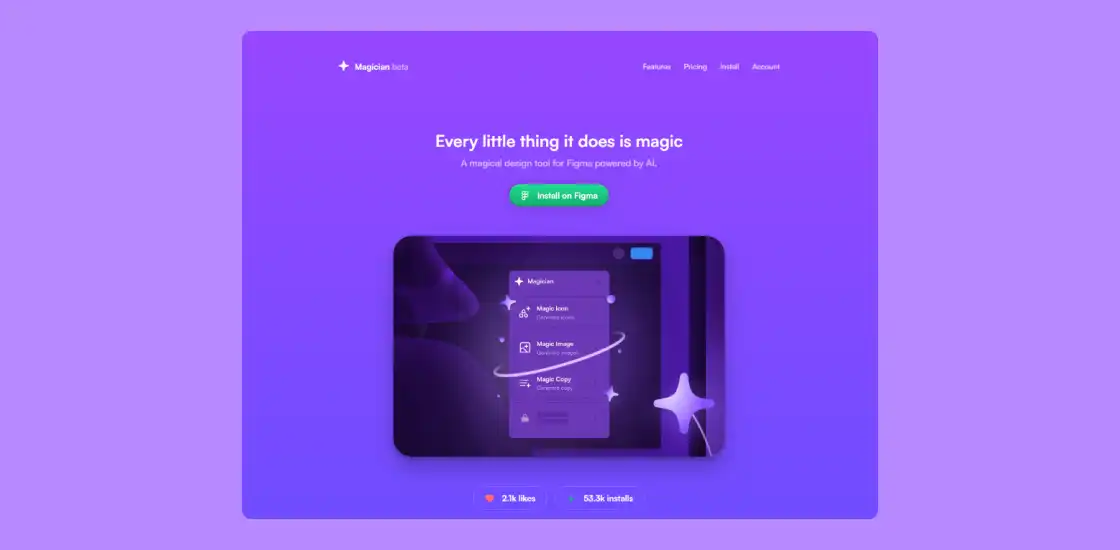

The team is also working on some kind of design companion; you may join the waitlist here: Genius To generate illustrations, your first choice will probably be Midjourney or Dall-E 2.


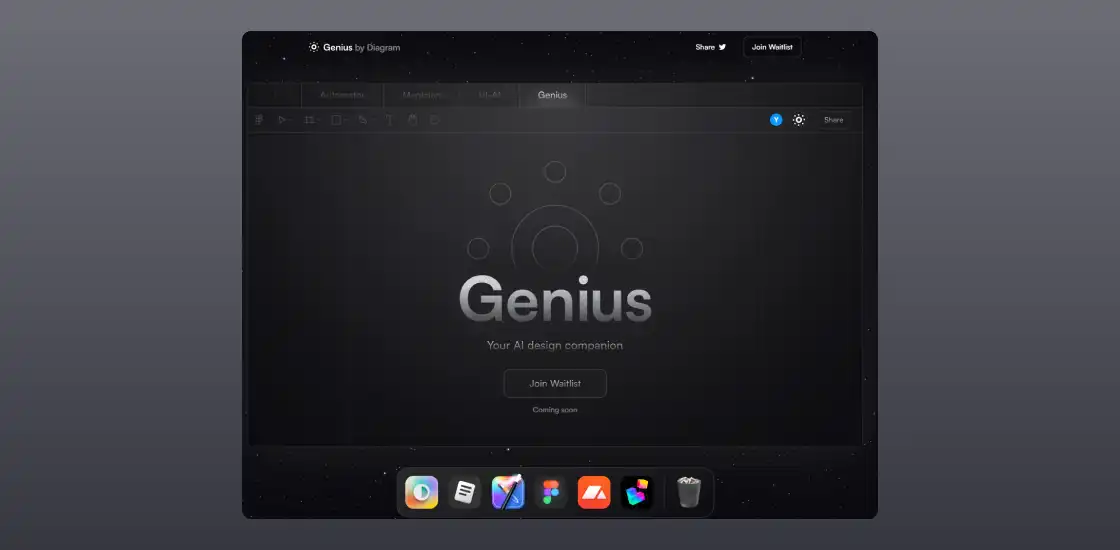

To create natural 3D objects, you should join the waitlist for the Spline AI tool.
More will be added soon. If you work in a team, it is time to prepare a design handoff. If you are a no-coder, you will most likely jump into your favorite tool and begin turning your designs into real solutions.
This is another area where AI is present. Framer will soon introduce its assistant, which will immediately assist you in setting up a website for a project.
Summing up
AI is changing the way we think about design, and designers who can incorporate this technology into their workflows will be better prepared to face tomorrow’s challenges. However, when using AI in design, it is critical to be mindful of the ethical considerations that arise, as well as to ensure that the data used to train AI systems is diverse and representative of the population. Designers can unlock the full potential of AI and create better user experiences by using AI tools for design and applying Enterprise Design Thinking.





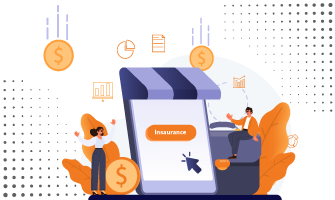

Automation is the lever that could help rework your operations,...
Sagar Shah
21 Mar 2023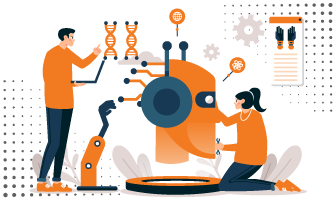

While there are challenges to navigate, such as job displacement and...
Sagar Shah
24 May 2023Hello!
Send us your basic project requirements, one of our Team managers will evaluate your requirement and get back with you with a formal proposal.